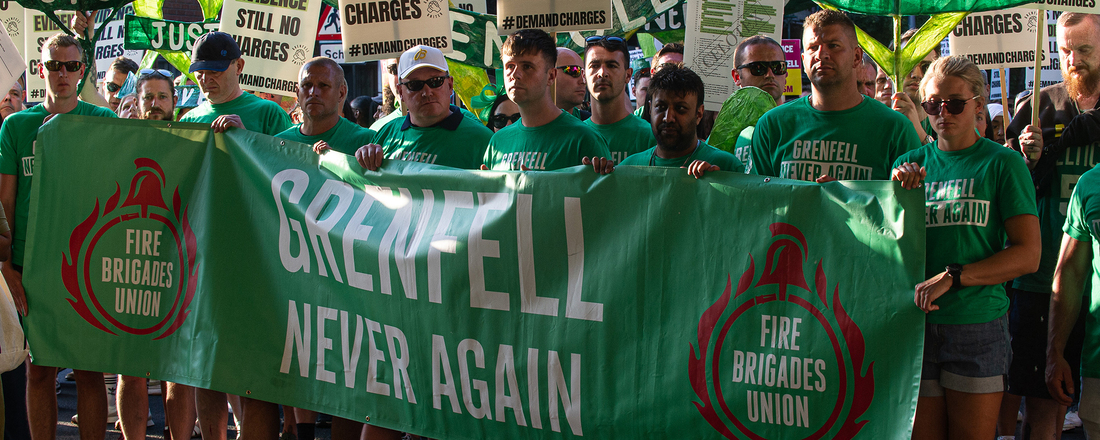Get updates from The Developer straight to your inbox Yes, please!
Burning buildings: Are we ignoring fire risks to hit climate targets?
It was sustainability that drove facades to become more combustible, leading to the Grenfell tragedy. In our efforts to reduce emissions, are we championing a dangerous use of materials? asks Peter Apps

We cannot keep building in the way we used to. This much is clear. The processes and materials we have typically used to build our homes come with a carbon price that is too high for a rapidly warming world. The UK has a “carbon budget” determining the amount it can emit if the world is to stay below 2°C of global warming. If business-as-usual building carries on through to 2050, this alone would exhaust that budget. We must change. But change is hard. And one of the key reasons it is so difficult is fire safety.
Sometimes it feels as if every action we take to make the built environment more sustainable has a corresponding price in fire-safety terms. Highly insulated facades reduce heat use, but have a fire risk. The same is true of green walls. Replacing concrete with timber means swapping a non-combustible material for a combustible one. Even installing solar photovoltaic panels provides a new potential ignition source on the roof.
A particular problem in the built environment is that we do not have the scope to learn through trial and error. Once buildings are built, problems are hard – or even impossible – to correct.
“The problem from a fire safety engineering sense is that whenever the built environment is trying anything new – whether in materials or methods, or new shapes and systems – it creates unknowns, and novel hazards,” says Professor Guillermo Rein, a professor of fire science at Imperial College London’s Department of Mechanical Engineering and editor in chief of the journal Fire Technology.
Risks in CLT buildings, such as ongoing smouldering after a blaze has apparently finished, are not yet fully understood
“As fire engineers we are only asked to look into this when something has gone wrong, and this creates what I call ‘perpetual catch-up’.”
The Grenfell Tower fire – and the devastating building safety crisis that has followed it – could be read in part as a failure to manage this changing risk. It was higher standards of sustainability that drove facades to become more combustible, but regulations did not catch up and, in their absence, the industry did not take account of the risks until it was too late.
So how can we avoid repeating this mistake? How can we meet the challenge of greening the built environment without undermining fire safety standards?
One of the key arenas in which this debate is playing out is timber. Timber is a more sustainable material than concrete, steel, bricks or many of the other materials on which our established building industry relies. It is regenerative and, if it is grown in a well-managed forest, the process of creating it actually sucks carbon out of the atmosphere, which is then sequestered in the building.
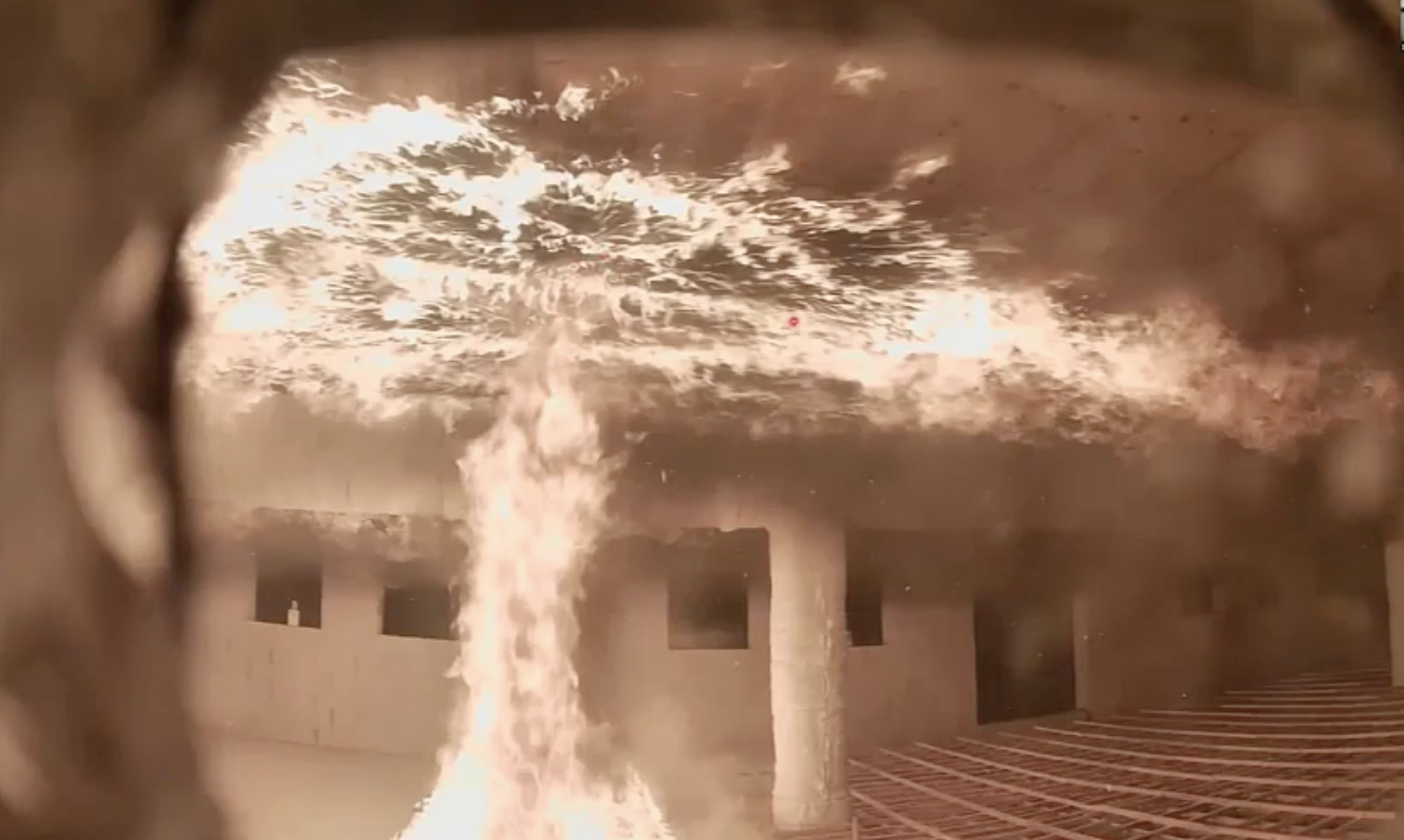
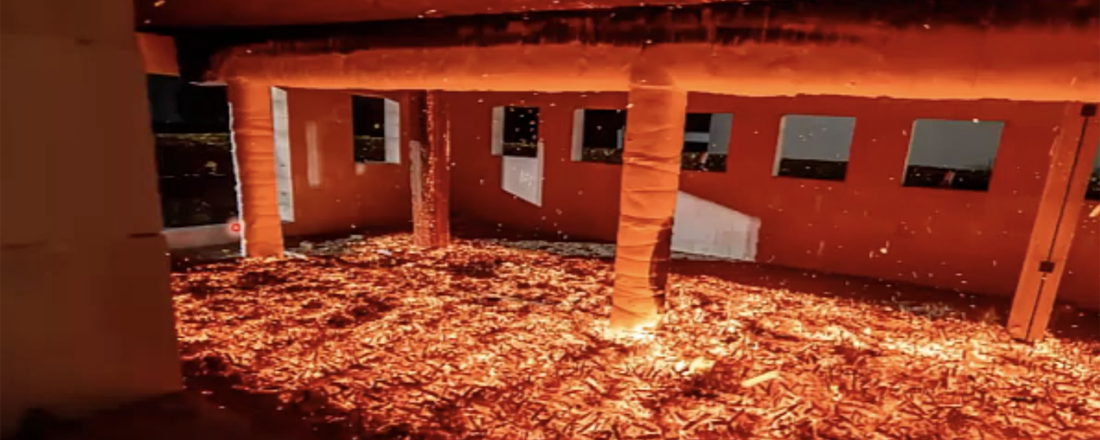
The trouble is that it is also combustible. And this means it has different dynamics to the masonry or steel frame building our regulators had in mind when they wrote regulations. It is important to be clear about distinctions here: timber buildings can mean lightweight timber frame or mass timber.
The former undoubtedly comes with an extreme fire risk, thanks to the ventilated cavities in which the frame sits. If fire enters one of these cavities, it is almost impossible to extinguish and can transform the building into a pile of rubble in a matter of hours, as has happened repeatedly. A criminal trial will soon hear details about a massive care home – the largest timber building in the world at the time of its construction – reduced to rubble in a matter of hours due to a blaze which started with a blowtorch.
Mass timber, though, is a different beast. This is where a solid structure – the walls, floors and ceilings – is made directly of huge, cross-laminated timber (CLT) blocks. This means that it does not have the extent of cavities present in timber frame.
“Smouldering can be very deep, but very dogged and determined, and if you don’t deal with it, you’re going to have a fire break out nine hours later somewhere else”
“CLT addresses some of the challenges that we had with timber frame because it enormously reduces one of the key challenges, which is combustible voids,” says Dr Jim Glockling, director of Glockling Consulting and a former director of the Fire Protection Association.
But this is not to say it is risk free. A CLT building is one where the physical structure of the block is combustible and that means it will perform differently in a fire. Risks such as ongoing smouldering after a blaze has apparently finished are not yet fully understood.
“Smouldering can be very deep, but very dogged and determined,” says Glockling. “And if you don’t deal with it, you’re going to have a fire break out nine hours later somewhere else and it will manifest as flaming. I see that as one of the greatest challenges.”
While some in the timber industry promote CLT as possessing the quality to “self-extinguish” – where the fire effectively burns out because a char layer has developed on the surface of the timber, not all experts are persuaded.
“I love timber,” says Rein. “And as an engineer, I love building with timber. I personally feel very happy when I am in a timber building. But I know timber is flammable.”
“What happened over the next hours and days is that we observed smouldering hot spots; not just one or two, but dozens... and some of them ate through the CLT”
In 2021, Rein helped conduct a large-scale mass timber experiment in France, dubbed Code Red, with the engineering group Arup. Arup funded, designed and conducted 4 experiments, then analysed and published the data, and is developing guidance based on the findings.
“These experiments were in the largest compartments ever studied in fire science,” says Rein. “We were looking for self-extinction which is the golden egg for protection of timber. But my advice was that after we observed self-extinction, we did not call for suppression until days after. Because that is what self-extinction should mean, the fire should be completely out.
“The code red experiments went on at night and we saw self-extinction of the flames. The CLT stopped burning – it was a perfect example of it. But what happened over the next hours and days is that we observed smouldering hot spots; not just one or two, but dozens. There were an incredible density of hotspots and some of them ate through the CLT. That means it would be compromising the stability of the building. I was literally horrified when I saw this.”
This touches on a second fear about CLT. How would a building perform structurally in a large fire? Could the building collapse? How would it fall if it did collapse?
“I am an active member of the fire science and engineering community and editor of one of the top fire safety journals,” says Rein. “And I can tell you that if [a study had been carried out on this issue], I would know about it. We do not know the answer to that question.”
This is not just about fire. A CLT building in Woodford Green, Essex, recently had to be demolished after a water escape rotted the timber causing loss of structural integrity.
“Buildings are not, in my opinion, sustainable if they have a lifespan of less than 50 years and if they are susceptible to disproportionate collapse,” says Andrea White, managing director at AW Fire and founder of the group Women Talking Fire.
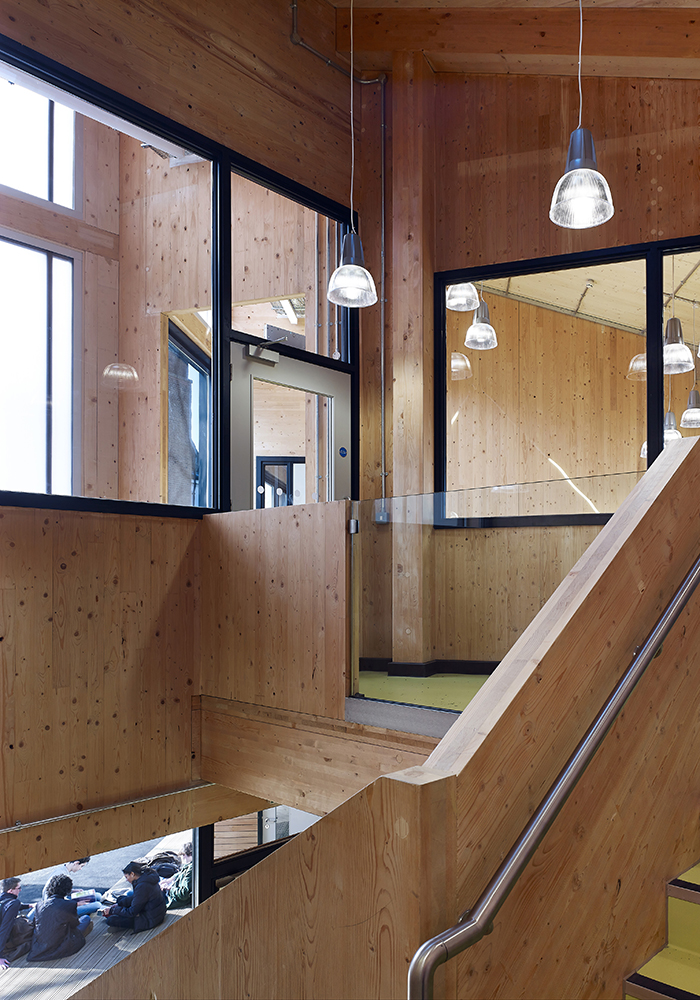
One potential answer to these risks is to encapsulate the timber – in layman’s terms, to cover it all with plasterboard. This idea has been developed through the New Model Building Guide – a guidance note prepared by specialist timber architect Waugh Thistleton with the help of internationally renowned fire scientist Professor Jose Torero:
“It’s a specific desktop study which takes on board existing learning and existing research and works to current building regulations,” says Waugh Thistleton director Andrew Waugh. “For a residential building, the principle is that the plasterboard will protect the timber from igniting and the timber will never ignite.”
To be certain of this protection, however the plasterboard inside each individual flat would need to be maintained. “From a structural perspective, small openings in the plasterboard will not result in any significant impact – the timber would self-extinguish as the combustible furnishing inside the home burns out,” says Waugh. “However, if a really large piece of plasterboard was removed this could potentially compromise the fire strategy. But in this worst-case scenario it would be a very slow process and one the fire brigades would be aware of and be prepared to deal with.”
Rein is not so sure. “Smouldering loves to go into the corners, into the crevices,” he says. “In our experiments, we had encapsulated timber and the smouldering found a vulnerability, a little gap, and was able to go in and burn the timber.”
If we are to move forward, it is important to have open debates and scientific research on these issues. For some time, debate on timber has been fraught, with a degree of defensiveness among its many proponents. But that may be changing.
Glockling recently helped write a mass timber “playbook” which addresses many of the safety concerns from the perspective of insurers. “It’s a very comprehensive, no-holds-barred guide,” he says. “I think allowing it to be produced shows an industry that is maturing and willing to confront the very real challenges. So I think we’re miles on from where we were, which was just denying there’s a problem. Nonetheless there are still some quarters who say, well, we don’t need sprinklers because it’s designed to self extinguish and that’s where I have a problem.”
“We need to be honest about the less-well-researched fire risks and properly address them, not ignore them”
Jane Duncan, a former president of the Royal Institute of British Architects and chair of its fire safety group, also takes issue with interpretation in some of the claims about structural timber in high-rise buildings. “There’s a lot of marketing speak,” she says, “and I am concerned that architecture students are not always taught what the wider issues are. They receive lectures that describe a green and structurally stable material, and then almost automatically include it in their buildings without questioning its fire safety credentials further.
“Yes, this is a great material. It’s very stable, very strong and (hopefully) sourced from renewable resources. But we need to be honest about the less-well-researched fire risks and properly address them, not ignore them.”
And this is just timber, where the sustainability versus fire safety debate is quite well developed. In other areas that is less true. Take green walls. These are a relatively modern innovation of vertical planting, running foliage up the side of tall buildings.
Green walls come with a major potential fire risk for two reasons. The first is that if the foliage dries out, it can burn, allowing the fire to jump floors and breaching compartmentation. The second risk is more serious as, in many popular systems, the pots in which plants are rooted are made of the highly combustible plastic polyethylene. A loophole in building regulations guidance allows just the surface – wet vegetation – to be fire tested for the system to be approved.
“It is cladding by another name, but it doesn’t need to be tested as cladding,” says Glockling. “You could envisage a cavity with maybe a plastic foam insulation, an air gap, and then the back of the potting system which is polyethylene. That’s an even worse situation than Grenfell but it’s allowed because of a caveat in building regulations, which is not acceptable in any way, shape or form.”
Ian Abley, a technical designer at Audacity adds: “They use the plants and the soil to get through the test but it is potted in plastic. In the test, the fire doesn’t get to the back of the pot, but turn it into a cladding system and the fire will break out of the window and travel up the back of the pots.”
“With some green walls, the back of the potting system is polyethylene. That’s an even worse situation than Grenfell”
It sometimes feels as if fire safety and sustainability are locked in conflict. Whatever improves one undermines the other. Take the recent proposal to require two staircases in buildings above 18m, for example. Part of the resistance in the industry comes from claims that this will result in a larger building footprint and single-aspect flats, which are difficult to ventilate during a heatwave.
Abley believes this fear is misplaced. Tougher rules on stairs could lead to the adoption of better solutions. “Ventilation is really important,” he says. “But the whole invention of scissor flats was to achieve through-ventilation, it’s the great Modernist invention.” Scissor flats are essentially maisonettes, where the flats in a high-rise are across two floors with different aspects.
There are also innovative designs being developed, including one recently featured in the RIBA Journal designed by Matt Brook Architects, which involves two interlocking but independent staircases arranged around a central, fire-rated wall. “We’ve got two stairs pretty much within the footprint of a single stair,” lead architect Matt Brook told the publication.
Is this, then, the answer? By insisting on higher standards, regulation can drive innovation instead of stifling it. Take facades. For years, Part L of the building regulations, which cover thermal efficiency, was increasingly tightened, requiring more stringent u-values for buildings. But Part B, covering fire safety, was neglected. The result was designers achieving Part L by using thin plastic foams, which are now having to be removed because of fire safety concerns – a hugely costly operation both in terms of cash and carbon.
But since plastic insulation was banned on high rises in 2019, new products have been developed that can achieve the required u-values without posing a fire risk.
“Basically, the answer is often to invent something,” says Abley. “We need a thin and highly insulating panel that is non-combustible. It’s not beyond the wit of man. There’s vacuum panels, fumed silica, some of the big capital is trying, but that’s the nut to crack.”
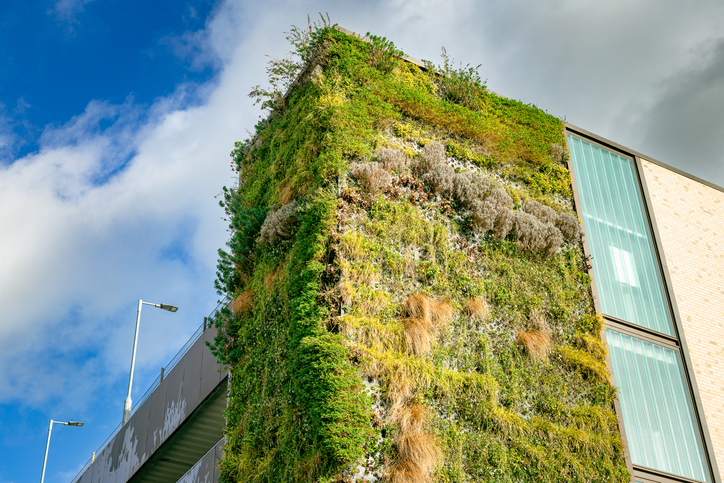
“You’ve got to remember there is no free lunch. As you increase sustainability, you increase your fire risk”
As soon as it has been required, designs are being developed to achieve it. “If you’re given a regulation and you have to conform, you do it,” says Duncan. “Challenges should not be a problem in an industry which is innovating all the time.”
Engineers are confident that with research and honesty about the hazards, the fire-safety issues with timber can be solved. Designing non-combustible vertical plant pots should also be quite possible. As should incorporating both through-ventilation and a second escape stair. But too often the industry will choose to look for a loophole or avoid difficult questions until the law changes to force them to act differently.
“I always tell industry, in public and private, if you don’t fix this, regulation is coming,” says Rein. “If you don’t talk to each other and fix this, it will be fixed for you.”
“I haven’t got a problem with people innovating,” says White. “But we need to do it in a measured way. We’re not just designing and creating consumables such as kettles or toasters; we’re designing and constructing buildings that are expected to last for 50 years plus. We need to design and build in a way that doesn’t bring negative ramifications for the people who own or occupy them over a building’s lifespan.”
We also have to be honest about the nature of the construction industry, which has earned a poor reputation in recent years. Many professionals care deeply about the buildings they build but the industry is still driven by cost – and this does not always result in quality.
“Architects in the main tend to be considerate, ethical and socially responsible,” says Duncan. “But they may have difficulty addressing clients who aren’t necessarily thinking the same way. There are, sadly, also still building contractors who most certainly remain more interested in their profits before their social responsibilities.”
“Obviously, the pursuit of sustainability is a good one. That’s not in doubt,” says Glockling. “But you’ve got to remember there is no free lunch. As you increase sustainability, you increase your fire risk.”
Perhaps, in the end, the mistake is viewing the green agenda and fire safety as in conflict at all. The truly sustainable solutions will be the ones which are fire safe. The job of the industry is to find them.
Peter Apps is an award-winning journalist and author of Show Me the Bodies: How we let Grenfell happen. The book was awarded the Orwell Prize for Political Writing in 2023. Apps is a contributing editor of Inside Housing
From the magazine
This article appears in the Winter 2023 edition of The Developer magazine. To get your copy, you can subscribe by supporting us on Patreon, sign up as an organisation member for a range of benefits including tickets to all our Festival of Place events, or buy a single issue in our shop.
If you love what we do, support us
Ask your organisation to become a member, buy tickets to our events or support us on Patreon
Sign up to our newsletter
Get updates from The Developer straight to your inbox
Thanks to our organisation members
© Festival of Place - Tweak Ltd., 124 City Road, London, EC1V 2NX. Tel: 020 3326 7238
